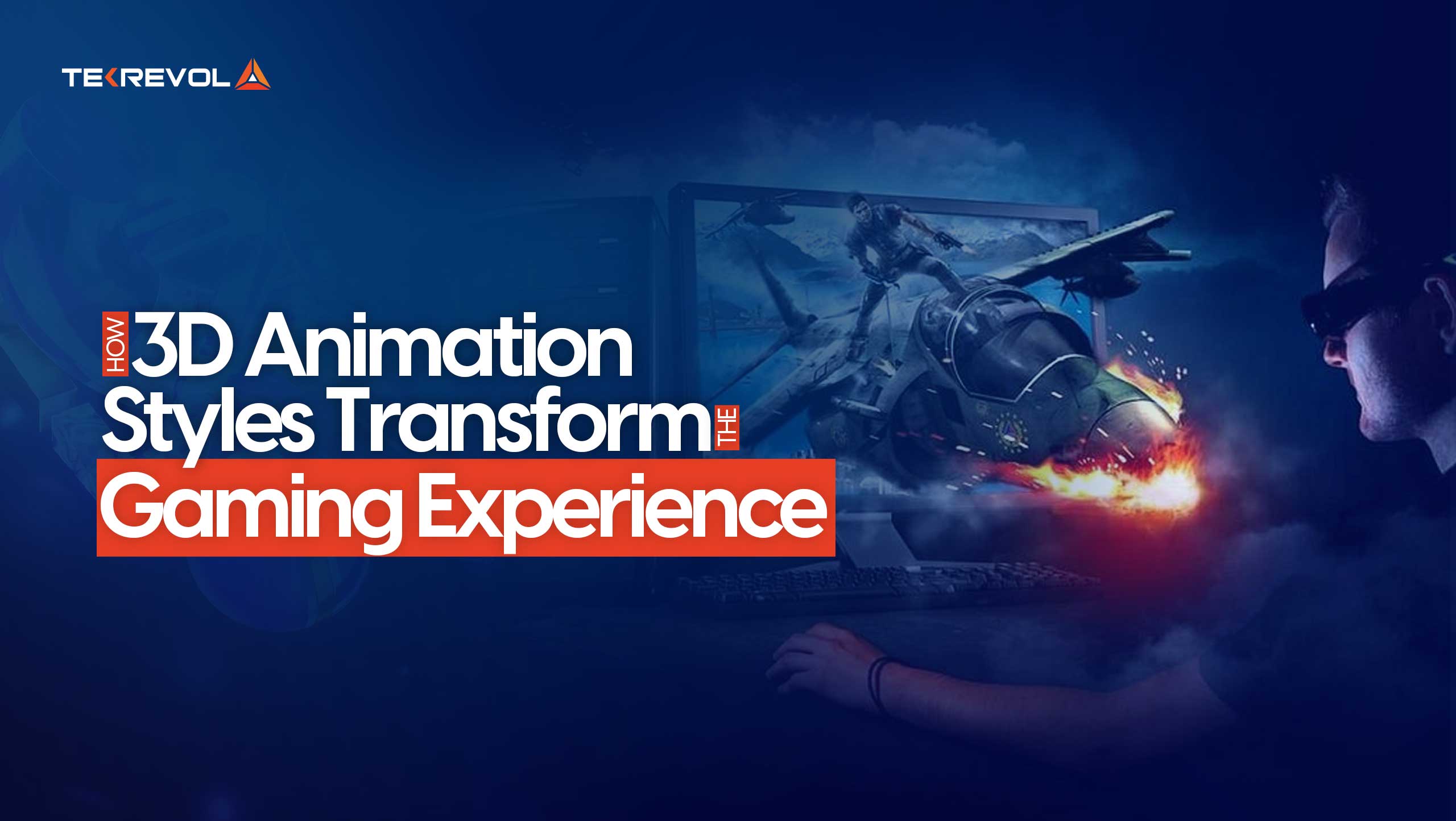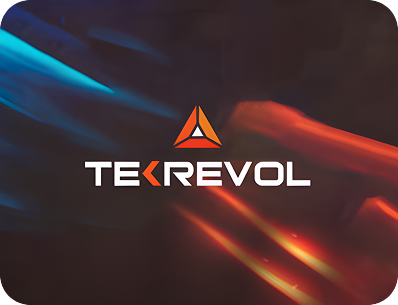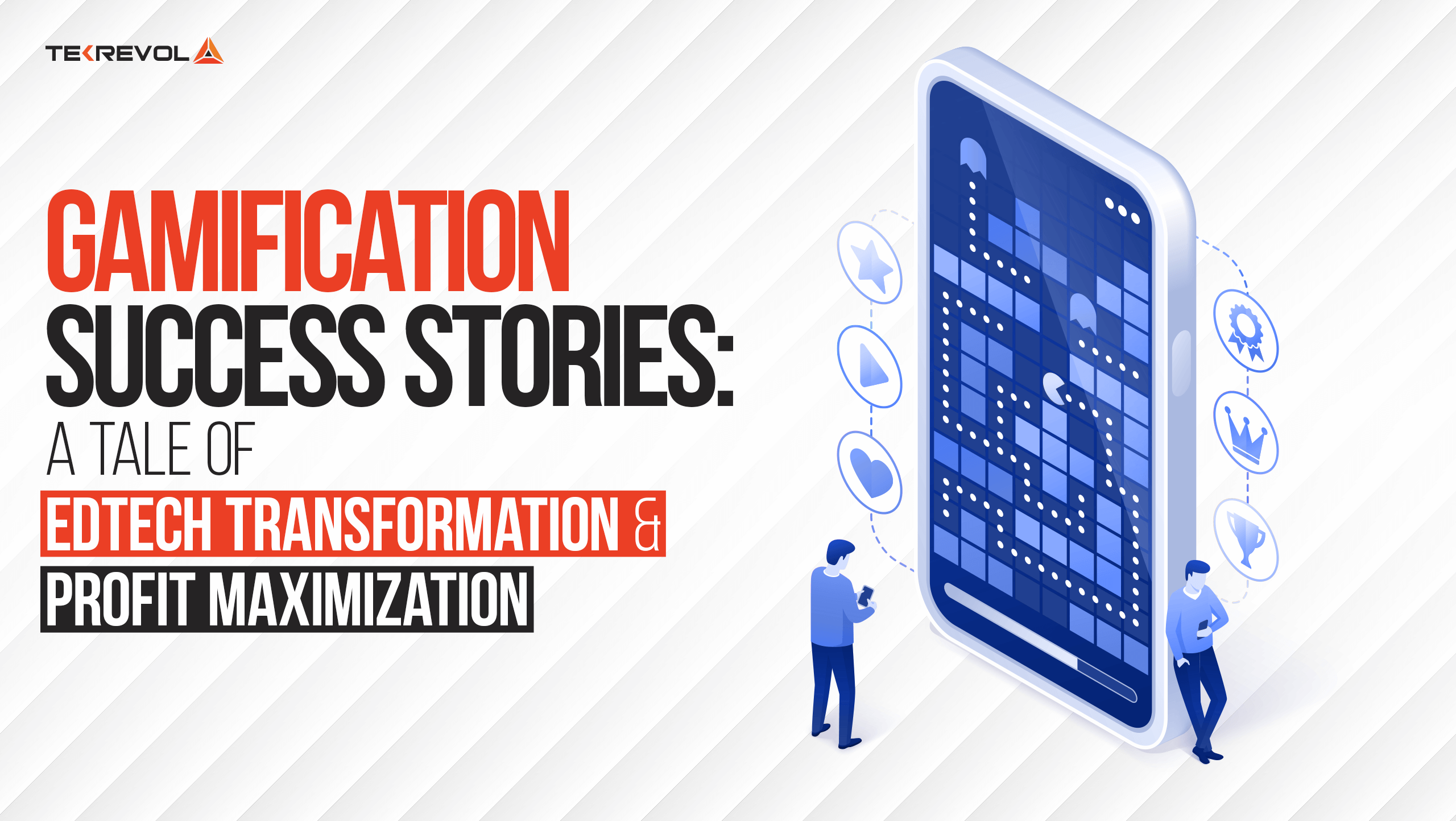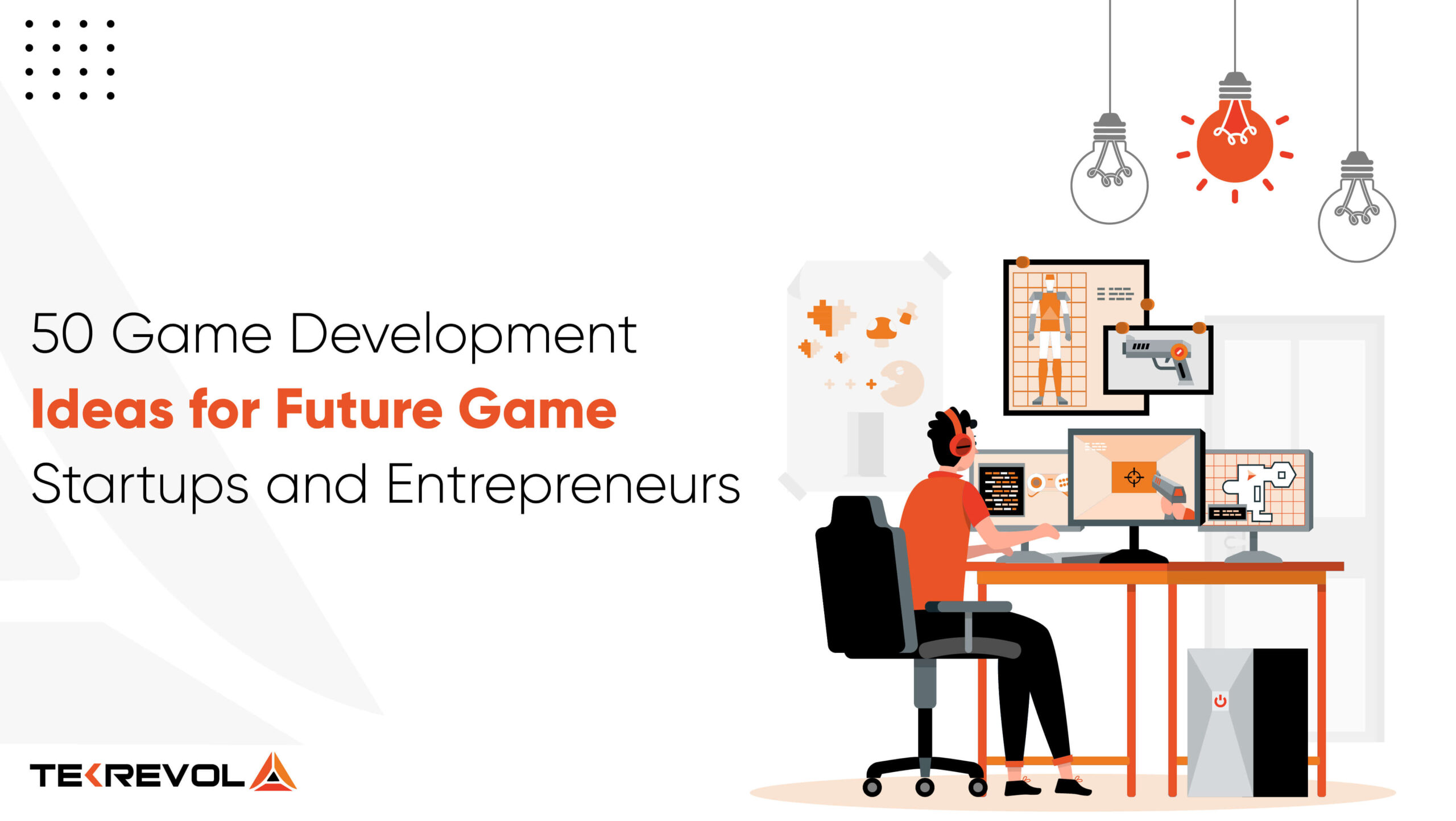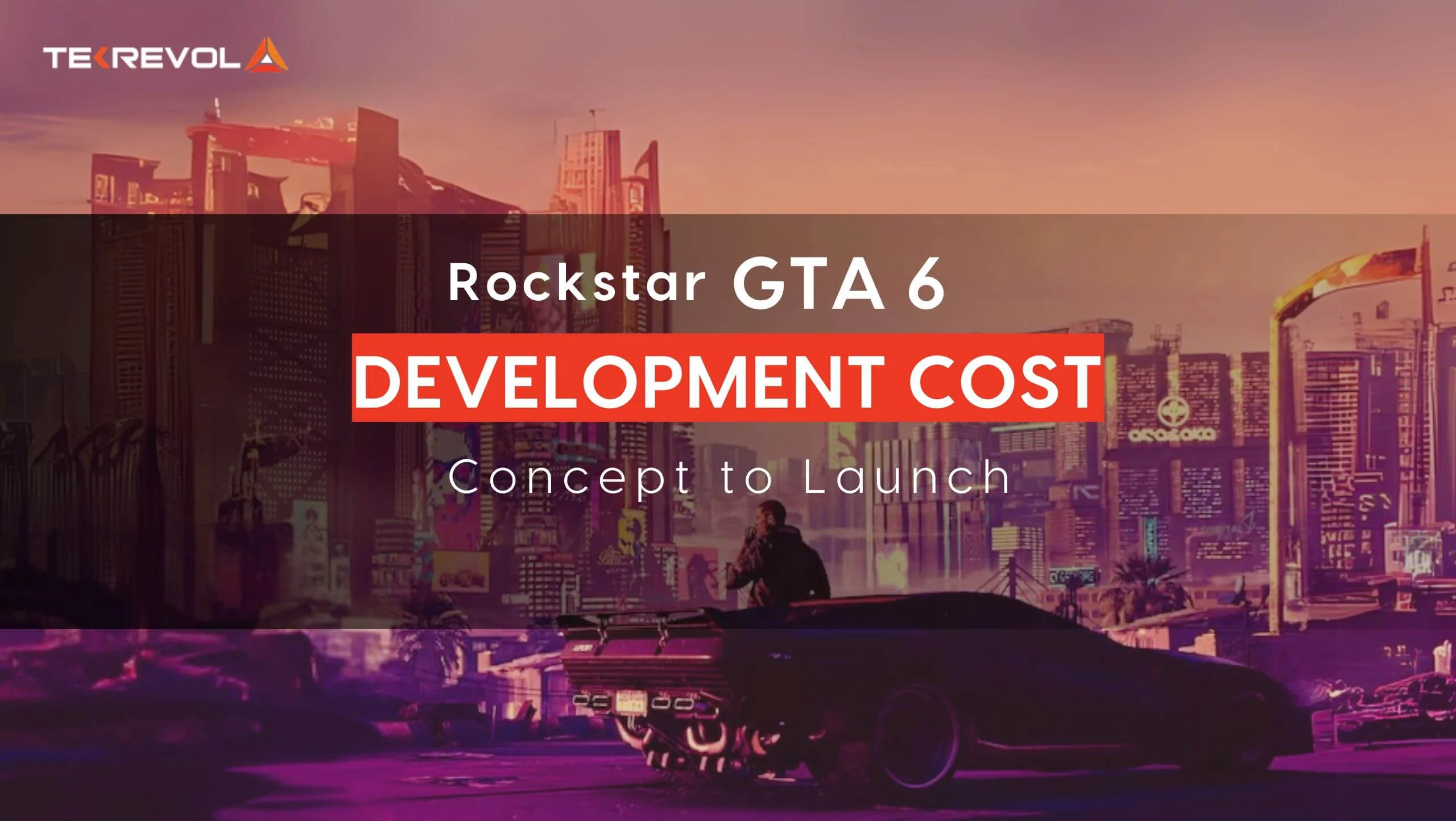Ever played a game so visually stunning it felt like you were living inside it?
That’s the magic of modern 3D animation in gaming. From the way a character blinks to the depth of entire virtual worlds, animation styles have evolved to do more than just look good. They bring stories to life and create experiences players can feel.
In today’s gaming, it’s no longer enough to have fun mechanics or cool characters. What sets top-tier games apart is how they move, react, and immerse you in their universe.
Whether it’s hyper-realistic motion capture or stylized cell-shaded characters, different 3D animation techniques play a huge role in defining how a game is experienced. So, how exactly do these animation styles influence gameplay and user engagement?
In this blog, we’ll break down the most impactful 3D animation trends, explain how they’re transforming the gaming industry, and share how developers can use these styles to level up their projects.
Understanding 3D Animation in Games
3D animation in games is the creation of moving pictures in a three-dimensional space. This technique lends depth to graphical storytelling, makes players feel present, and facilitates interactive worlds.
Some of the most significant characteristics of 3D gaming animation are:
- Character Animation: This helps characters in the game to be alive with the help of motion capture and skeletal animation.
Environmental Animation: The process of creating dynamic and interactive game worlds with realistic physics and interactive objects. - Special Effects Animation: Contains explosions, weather, and particle systems that bring realism to game play.
Popular 3D Animation Styles Transforming The Gaming Industry
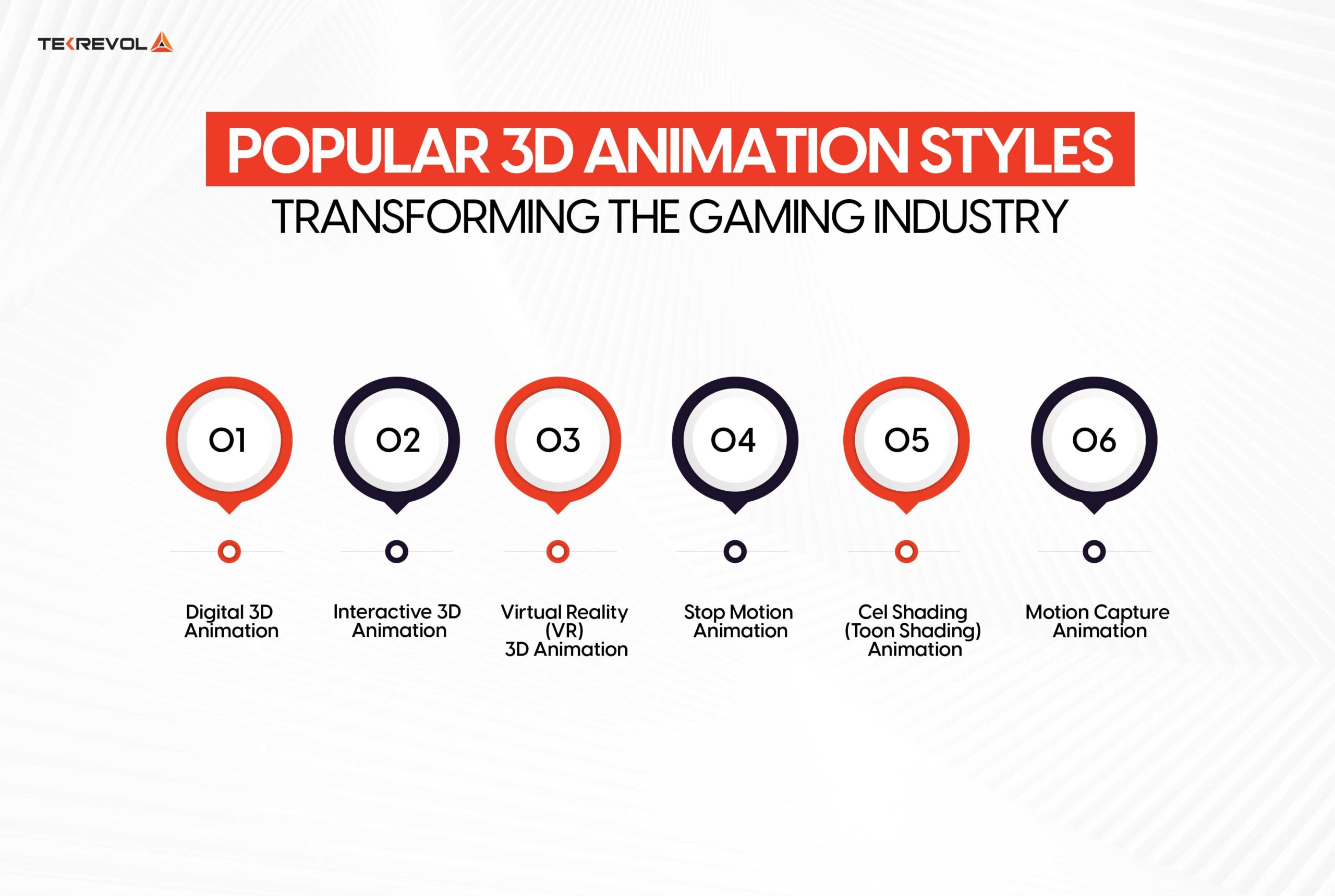
The biggest advantage of 3D animations over traditional animation techniques is their “promise to realism.” By utilizing Tweening; a process of using technology to fill in the missing frames between key poses, 3D animations create a greater sense of fluidity and immersion in the game. This is especially relevant when you are trying to create a believable open-world experience.
Before selecting the ideal 3D animation style for your video game to achieve the desired effect, it’s essential to understand the various types available. While there are numerous 3D animation styles in the market, we’ll focus on the most prevalent ones.
Read on to discover the most popular 3D animation styles in the video game industry and their applications.
1. Digital 3D Animation
A digital 3D animation is an exclusive type of animation where the view of the movie does not interact with any of the digital environment objects. The digital objects’ level, on which the animation work and other animations exist, is regarded to be exclusively visual.
This type of animation is used the most in video games, live-action movies, and in-game videos.
A game artist will use software from packages such as Cinema 4D, Maya, or SketchUp to design video game character. The process would include some of the steps, such as concept art, 3D modeling, and 3D animation.
In digital 3D animation, the concept artist usually communicates their game concept through detailed drawings of the characters, environments, and objects. From these sketches, the 3D modeler builds up a 3D model of the characters within the total digital environment.
Then, the 3D animator makes a skeleton of the 3D model and defines its movements and commands. The workload is too huge on the 3D animator as the 3D objects have to be rendered permanently at 360 degrees, while all parts of the 3D objects are visible all the time.
Digital 3D animation is prevalent in gaming. From casual ones such as Fortnite to serious, most majorly from iconic films like Star Wars kind of animation provides an experience that is immersive.
Software Used: Cinema 4D, Maya, SketchUp
- Bring Your Game to Life with 3D Animation!
- Our expertise in 3D animation styles in video games delivers immersive and impactful experiences.
2. Interactive 3D Animation
Interactive 3D animation is an animation in which the player can move in the 3D environment with the mouse and interaction with 3D animation. It is special, including additional software and thousands and thousands of possibilities for implementation.
In the making of interactive 3D animation, game artists use special software, and everything should be customizable since the player will see objects from many angles.
In interactive 3D animation, a player can interact in the 3D environment; this requires some special requirements. For example, characters have to respond correctly to all player commands. This type of animation is mostly used in video games, where players can interact with the environment and characters.
Interactive 3D animation can be much better visually; however, developers will require much more time to create an environment that is persuasive enough to cause complete immersion.
Interactive 3D animation has been very common in video games. Some of the most famous games, like Minecraft and The Sims have utilized this kind of animation to create interactive experiences.
Software Used: Unity, Unreal Engine, Blender
Aspiring to Launch an Action Adventure? Read Our No-Fluff Guide on: 7 Best Games Like RuneScape to Play in 2024
3. Virtual Reality (VR) 3D Animation
Virtual reality 3D animation is a relatively complex form of animation, which is produced using specialized VR headsets such as Google Glass or Oculus. It is intended to generate an immersive experience when playing video games and running simulations.
For the production of VR 3D animation, game artists use specific software and environments, and objects must appear profoundly real.
The concept of VR 3D animation immerses the player in the virtual environment. Therefore, there is a need for high realism. It is generally applied to video games and simulations wherein players can interact with the environment and objects in a very realistic manner.
VR 3D animation provides a much better experience for the viewer/player, but it needs much more dedication and resources than interactive 3D animation.
VR 3D animation is implemented widely in the world of gaming. A couple of recent games, such as Beat Saber and Job Simulator, have utilized this kind of animation to create 3D experiences.
Software Used: Unity, Unreal Engine, Blender, Autodesk Maya
- Want Next-Level 3D Animation for Gaming?
- Leverage top-notch 3D animation styles to make your game unforgettable and engaging.
4. Stop Motion Animation
Stop motion animation is created frame by frame by images of elements, manipulated physically in small steps, and played out at great speeds to create 3D animation.
Stop motion animation has a large creative space, but the process requires extra attention and patience from the artists involved. Failure to capture a particular frame right means redoing the entire composition.
This is a type of animation widely used in the film industry and, amazingly, has already been made famous by some iconic films, such as Wallace and Gromit and Isle of Dogs.
Stop motion animation is also applied in marketing; it stretches as far as learning or education, where it is used to design very interactive simulations and educational material.
Stop-motion animation has several subtypes with unique techniques and applications. The following is a short rundown of these subtypes:

- Silhouette Animation: This style uses shadowed cut-out figures that are lit from behind, creating a distinct silhouette effect.
Examples: Limbo, The Adventures of Prince Achmed - Claymation: Claymation uses the technology of using clay models in animated motion. These clay models are molded to move and have a minimum movement between each frame for smooth motion.
Examples: The Neverhood, Armikrog - Pixilation: In this style, live actor movements are caught frame by frame through stop-motion, and this yields a dreamy effect.
Examples: The Dark Eye, Hylics - Cutout Animation: Animation produced on the basis of moving flat cut-out characters or forms, which are generally presented as hand-fashioned frames.
Examples: South Park: The Stick of Truth, Paper Mario: The Origami King - Object Animation: Real-world objects are animated frame by frame, creating a sense of movement that is unique to physical items.
Examples: Hylics 2, Toy Soldiers - Puppetoon Animation: Puppetoons involve stop-motion animation using puppets with replaceable parts, allowing for expressive, fluid animation.
Examples: The Dream Machine, Medievil Resurrection - Model Animation: This style uses intricate models, often with metal skeletons or armatures inside, for realistic, precise movements.
Examples: Magic & Mayhem, Skullmonkeys - LEGO Animation: LEGO Animation: It is also called “brickfilm” where LEGO bricks or figures are used in the stop-motion sequences.
Examples: LEGO Builder’s Journey, LEGO Worlds
Software Used: Dragonframe, Stop Motion Pro, Adobe Animate
5. Cel Shading (Toon Shading) Animation
Cel Shading Animation is otherwise known as Cel shading or Toon shading, which gives computer graphics the look and feel of hand-drawn animation. This is one of the most frequent techniques used in animations for video games, movies, and advertisements.
Cel shading animation requires special software and techniques, such as non-photorealistic lighting and texture mapping, among many others.
In cel shading animation, the cel-shading process begins from a normal 3D model. Where cel-shading differs from the normal rendering technique is that it does not use photorealistic lighting.
Conventional lighting values are computed for each pixel and then mapped to a few discrete shades, which create this special flat look, where the shadows and highlights appear as blocks of color rather than being mixed in smoothly.
Cel shading animation is commonly found in the gaming world, and games such as Arcane and Okami have adopted this type of animation to help create different experiences. Cel shading animation has also spread to learning, where it applies to creating interactive simulations and educational material.
Software Used: Unity, Unreal Engine, Blender, Adobe Animate
- Need Unique 3D Animation for Your Game?
- We provide tailored 3D animation styles in video games ensure your game stands out.
6. Motion Capture Animation
Motion capture animation can be used in a wide range of applications that allow for recording real human movements to bring out the most desired action or movements in a virtual setting.
Motion capture animation is an indispensable process nowadays in AAA game titles, mobile projects, and even film developers. One primary characteristic of such animation would be the realistic movements of characters and objects.
Special software and techniques, such as motion capture suits and cameras, are used by artists to create this kind of animation.
In motion capture animation, movements of an actor are captured and translated into animation. Some of the most common applications include video games, movies, and advertisements.
Some of the advantages of motion capture animation over traditional computer animation of a 3D model include realistic physical interactions and cost-effectiveness.
Software Used: Autodesk MotionBuilder, Vicon, OptiTrack
Wonder How Would Your Game Make Money? Read Our Comprehensive Guide On: Ad Revenue in Mobile Gaming – Earning Tips for Marketers
Key 3D Animation Techniques in Game Development
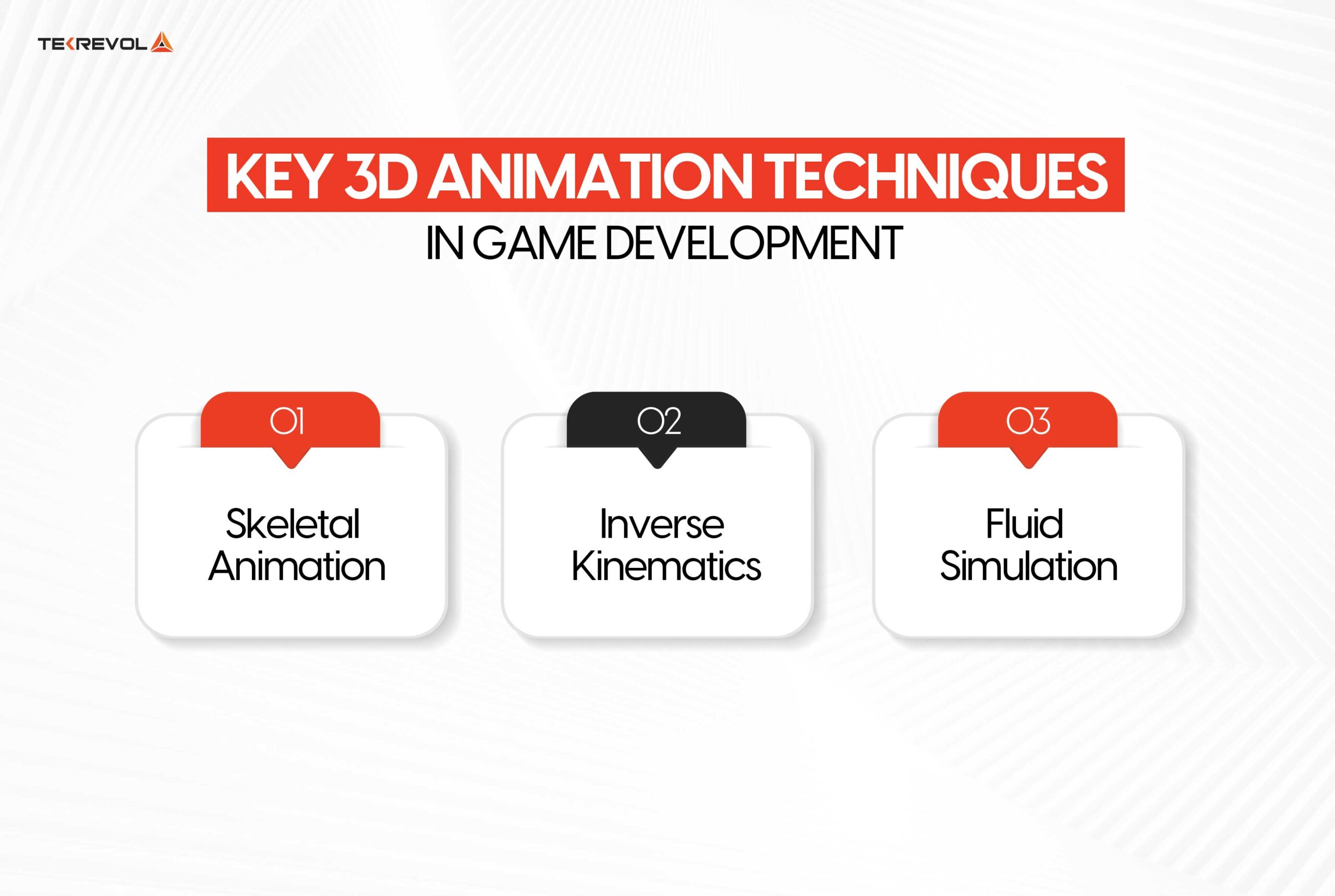
Types of 3D animation for gaming may also be classified based on the underlying techniques applied. These techniques ensure that realistic movement and effect are generated, which adds to the experience of the game.
Some of the most key ones along with their popular examples, are enlisted below.
Skeletal Animation
Skeletal animation refers to the rigging or the skeleton of a character or object. Through this process, “bones” and “joints” define the movements that eventually allow a character or object to move in a lifelike manner.
An object’s pose and movements can thereby be affected through this technique simply by adjusting its skeleton without having to animate each frame.
This technique is particularly useful for characters that will perform extensive and varied movements such as walking, jumping, or fighting.
Example: The Elder Scrolls V: Skyrim and Assassin’s Creed series adopt very heavy use of skeletal animation of character interactions to ensure smooth, lifelike motions in complex, action-based gameplay.
Inverse Kinematics
IK computes the placement of the limbs of a character so that it appears more natural with movement. That is, rather than directly animating everything, Inverse Kinetics lets the animator set a point or location, for example, where the hand should be or where the foot will land, and all other parts attached to that one just fall in place as well.
This is an important technique in setting grounded animation or a more realistic one, especially in cases where the characters are using objects or within some kind of environment.
Examples: Climbing Mechanics in games like Shadow of the Colossus and Uncharted series using inverse kinematics to place hands and feet on rough terrain.
Fluid Simulation
Fluid simulation techniques create realistic effects for liquids and gases, like water, fire, smoke, or lava. It is a complex animation that uses algorithms to simulate the natural behavior of fluids, thus adding immersion and visual depth to a game.
Fluid simulations allow the in-game environments to be as realistic as possible, so the interaction with things like water and fire is really interesting and believable.
Examples: Sea of Thieves and BioShock series used fluid simulation to create dynamic water effects that liven up the visual excitement through lifelike waves and water interactions.
- Launch Captivating Game Experiences Today!
- At Tekrevol, we specialize in 3D animation styles that captivate players and add depth to gameplay.
Tools & Software for 3D Game Animation
Creating high-quality 3D gaming animation requires robust tools. Some widely used software includes:
- Autodesk Maya: Industry-standard for modeling, rigging, and animation.
- Blender: Free and open-source alternative for 3D animation.
- Unreal Engine & Unity: Game engines that support real-time rendering and animation.
- MotionBuilder: Used for motion capture animation and character rigging.
Behind-the-Scenes: The 3D Animation Process in Game Development
Creating 3D animation for games involves multiple stages:
- Conceptualization & Storyboarding: Artists and designers sketch out animations.
- Modeling & Texturing: 3D models are created and detailed with textures.
- Rigging & Skinning: A digital skeleton is added for movement.
- Motion Capture or Keyframe Animation: Character movements are animated using MoCap or manually designed keyframes.
- Rendering & Integration: Final animations are refined and implemented in the game engine..
Expert Insights: What Industry Leaders Say
According to John Smith, Senior Animator at Ubisoft, “The future of 3D animation for games lies in AI-powered procedural animations. It allows for dynamic, player-driven interactions, making every gameplay session unique.”
Similarly, Jane Doe, Lead Artist at Epic Games, emphasizes, “Stylized animations will continue to evolve, blending hand-drawn aesthetics with real-time rendering for greater artistic expression.”
Why TekRevol For Your 3D Game Development
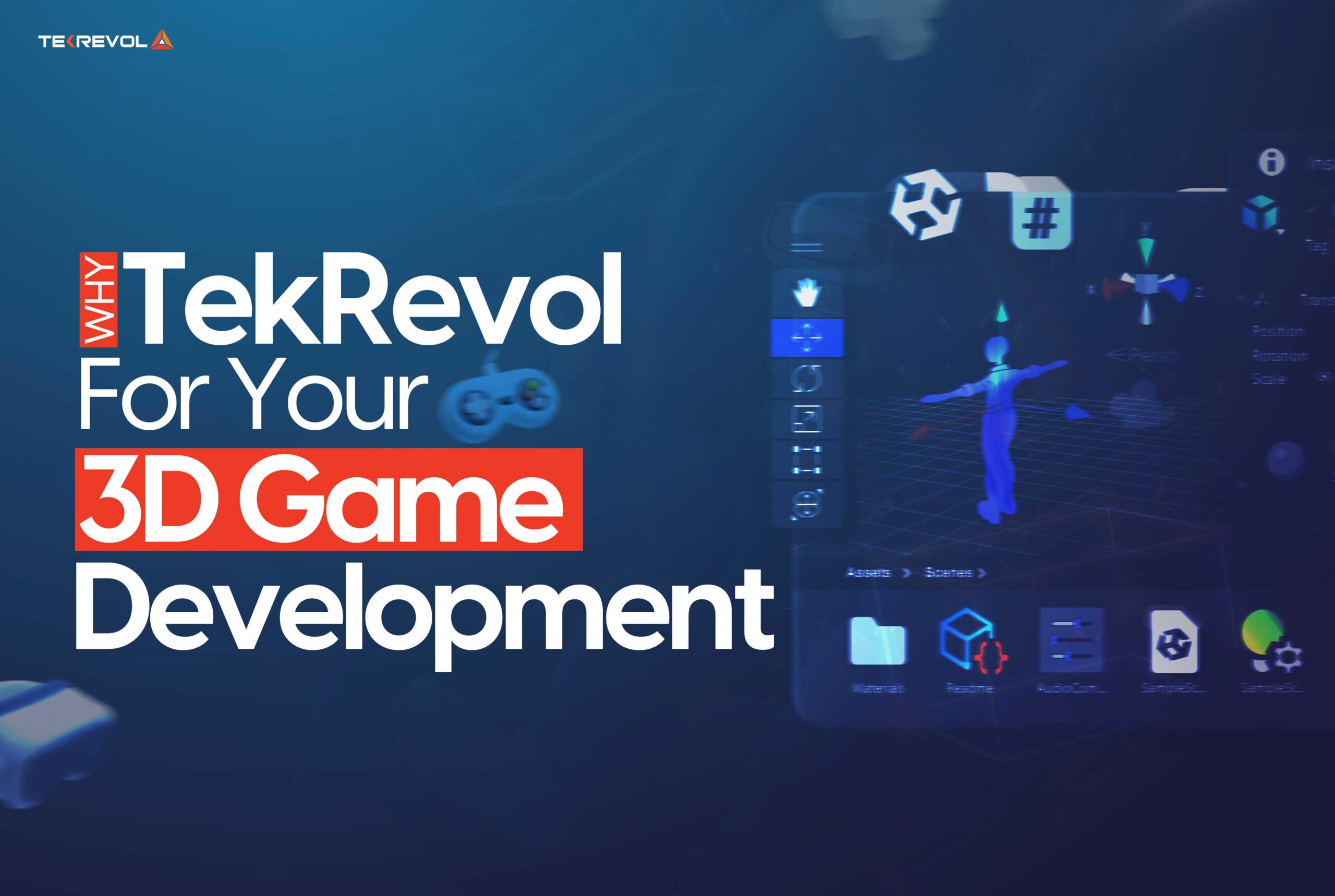
As you’ve made it this far, you’re likely searching for a trusted 3D game development company to bring your vision to life. Look no further than TekRevol, a leading 3D game development company with a proven track record of delivering chart-topping games.
Our team of more than 400 experienced professionals has over 8 years of experience in the industry and has successfully launched more than 500 apps and games for top brands worldwide.
Our success stories include “Ether Legends” which is a blockchain-based trading card game with 40% ROI growth and a 60% improvement in trading.
Another project that may be named is “Parcheesi Cash,” an interactive board game that spiked by 35% in the ROI and by 55% in player connections.
From full-cycle development to post-launch support, we offer comprehensive services, ensuring that your game not only meets but exceeds every industry standard for an entertaining and seamless experience for the players.

